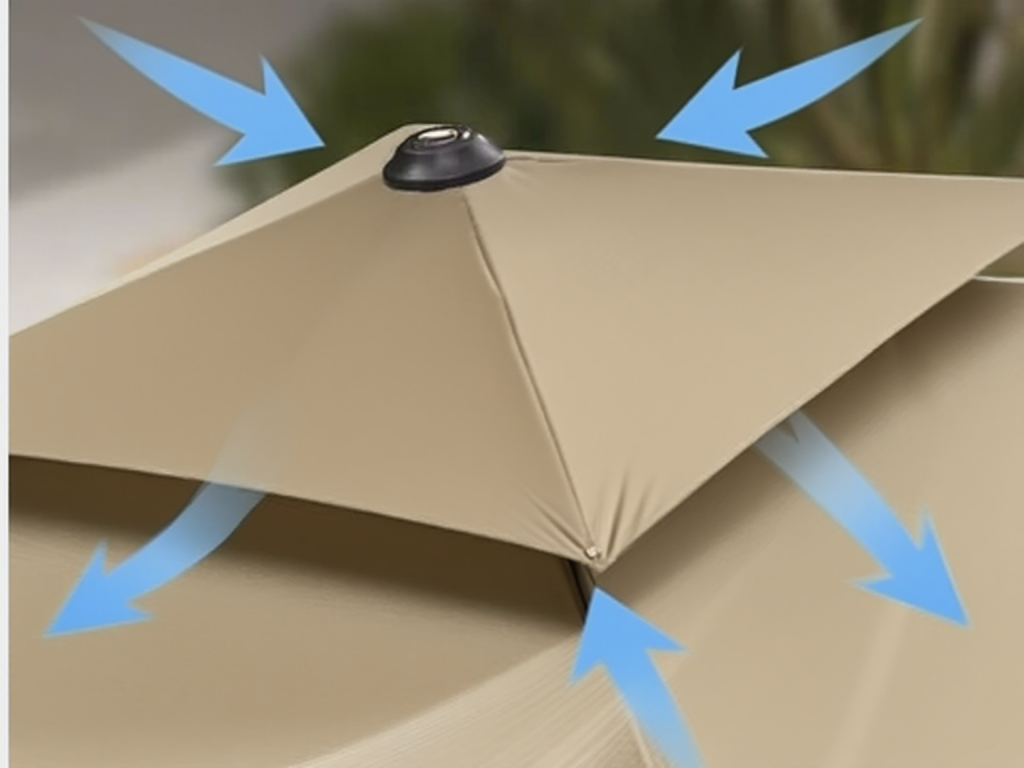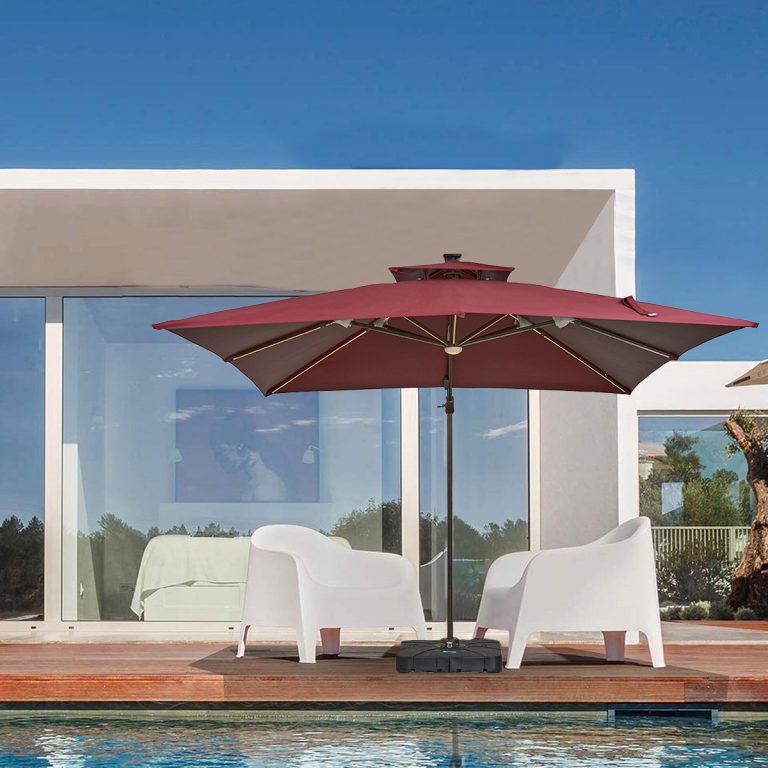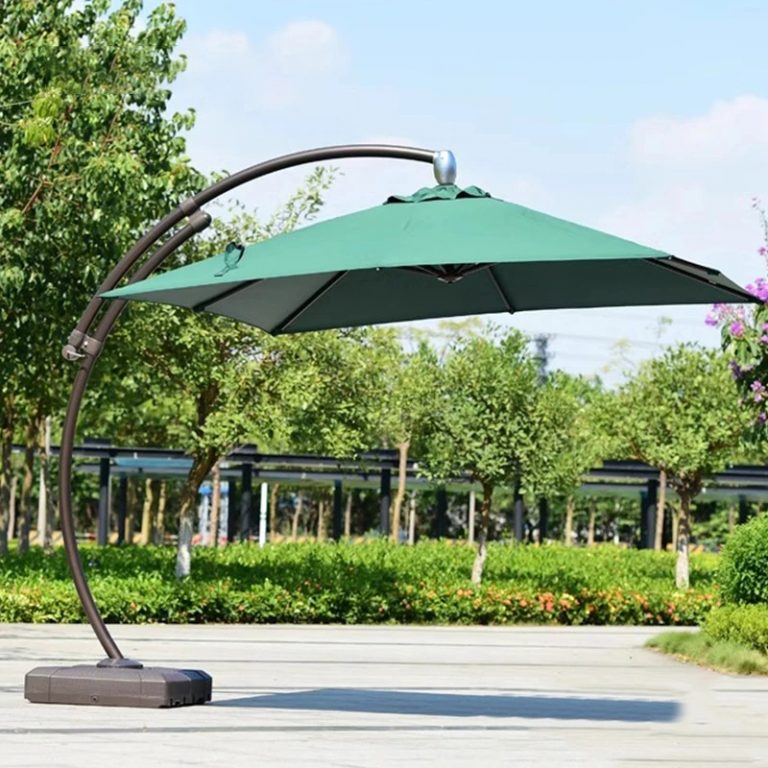As a leading manufacturer of high-quality parasols and outdoor furniture at SunnyParasol, we understand that wind resistance is one of the most critical factors our wholesale buyers consider when selecting commercial umbrellas. Customers frequently ask: “How exactly is umbrella wind resistance tested?” This FAQ will explain the science and methods behind wind resistance testing to help you make informed purchasing decisions.

Standard Wind Testing Methods
1. Wind Tunnel Testing
The most scientific and controlled method for evaluating umbrella wind resistance is wind tunnel testing. This process involves:
- Placing the umbrella in a specialized wind tunnel facility
- Gradually increasing wind speeds in controlled increments
- Measuring the umbrella’s structural response at each wind level
- Recording the exact wind speed at which deformation or failure occurs
Our testing follows protocols similar to those described in patent CN109186931A, where umbrellas are subjected to progressively stronger winds while sensors measure frame bending and structural stress. The test continues until reaching either:
- The umbrella’s deformation threshold (recording the “safe usage” wind speed)
- Complete structural failure (determining the “maximum resistance” wind speed)
2. Computer Simulation and Engineering Analysis
Before physical testing, we use advanced computer modeling to:
- Predict wind flow patterns around umbrella designs
- Identify potential stress points in the frame
- Optimize materials and structural elements
This digital analysis helps refine designs before committing to expensive physical prototypes.
3. Real-World Field Testing
To complement laboratory results, we conduct outdoor testing in various environments:
- Coastal areas with consistent sea breezes
- Urban settings with turbulent wind patterns
- Open plains with sustained high winds
Testers use portable anemometers to record exact wind speeds during these real-world evaluations.
Key Wind Resistance Ratings Explained
When comparing umbrella wind ratings, you’ll encounter several measurement systems:
Beaufort Scale
A 13-point scale relating wind speed to observable conditions:
- Level 5 (29-38 km/h): Umbrella becomes difficult to control
- Level 6 (39-49 km/h): Risk of umbrella inversion
- Level 8 (62-74 km/h): Likely structural damage
Engineer Wind Rating (EWR)
A professional engineering assessment of structural capacity, such as:
- W33 = 33 m/s (118 km/h)
- W44 = 44 m/s (158 km/h)
ASTM Standards
The American ASTM F3512 standard specifies:
- Method A: Maximum wind speed without damage
- Method B: Sustained wind resistance over 30 minutes
Factors Affecting Wind Resistance
Our testing evaluates how these elements impact performance:
Frame Design and Materials
- Fiberglass ribs: Flexible yet strong, can bend without breaking
- Aluminum/steel shafts: Rigid central support
- Reinforced joints: Critical stress points
Canopy Features
- Vented designs: Allow wind to pass through, reducing inversion risk
- Fabric tension: Properly stretched canopies handle wind better
- Seam construction: Double-stitched seams prevent tearing
Base and Mounting
- Fixed installations outperform freestanding models
- Base weight correlates directly with stability
- Proper anchoring is essential for commercial applications
Our Testing Protocol at SunnyParasol
We implement a rigorous 4-stage testing process:
- Design Phase Simulation
Computational fluid dynamics analyze aerodynamic performance - Component Testing
Individual frame elements undergo stress tests - Assembly Testing
Complete units evaluated in controlled wind tunnel conditions - Field Validation
Real-world performance monitoring at client sites
This comprehensive approach ensures our commercial umbrellas meet the wind resistance requirements of hospitality businesses, resorts, and other demanding applications.
Interpreting Wind Ratings for Your Business
When evaluating umbrella specifications:
- Consider your local typical wind conditions
- Account for installation environment (coastal, urban, etc.)
- Match the product’s rating to your safety requirements
- Remember that proper maintenance affects long-term performance
For most commercial applications, we recommend umbrellas rated for at least:
- 50 km/h (31 mph) for standard market umbrellas
- 80 km/h (50 mph) for heavy-duty or coastal use
At SunnyParasol, we stand behind our products with transparent wind resistance data. Each model in our catalog includes verified test results from independent laboratories. Contact our sales team to discuss the ideal wind-rated umbrella solution for your specific needs and location.







